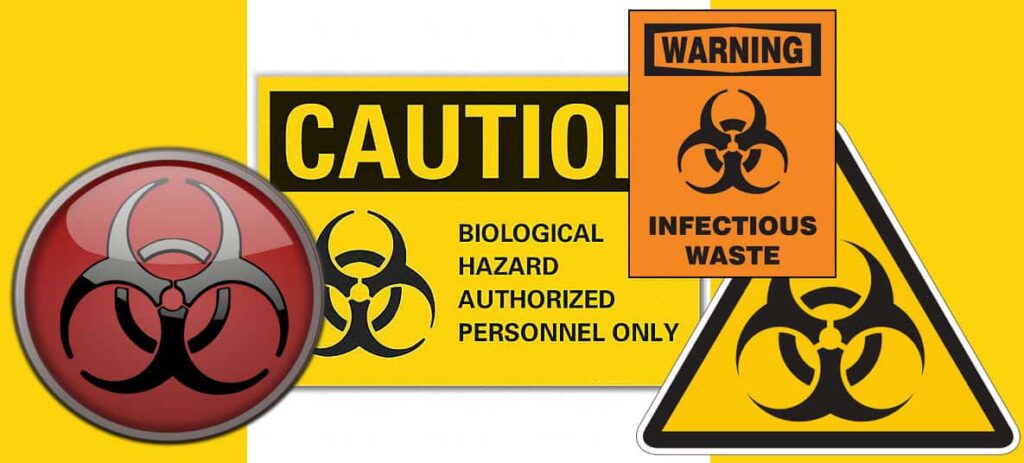So…What Exactly Is a Biohazard?
Perhaps you’ve seen the term ‘biohazard’ on a disposal container or trash receptacle at your doctor’s office. Or maybe you’ve seen the term in news articles. But do you know what a biohazard is and why there are specialized containers as well as companies that do biohazard cleanup? Biohazard remediation – that includes cleanup and restoration – is our business, and we’d like to give you the basics so you’re informed.
The first part of the word – bio – comes from the Greek word indicating something living. That’s an important distinction. And ‘hazard’ indicates that it could be dangerous. A biohazard is something that can threaten the health of a living being. But it also indicates that the contaminant is (or was) alive or contained living matter. Examples range from blood, vomit or feces to organisms that can cause infectious diseases, such as viruses and bacteria. Surgical waste is a biohazard. and so are molds.
The current COVID-19 virus is a biohazard. But so are used syringes and needles that could be contaminated with blood. That’s why medical facilities have special bins (usually red) for safe disposal of needles, sometimes called sharps. The international symbol is an interlocked set of 3 broken circles, usually on a yellow background. But signs use a variety of styles and colors. Shown below are some examples of biohazard warning labels.

Biohazards are classified from Level 1 to 4 in terms of danger or threat. These are:
Level 1: Minimal risk; usually gloves or a face covering are sufficient to protect yourself. Chicken pox and e. coli bacteria are examples of level 1 biohazards.
Level 2: Biohazards classified as 2 can cause mild illness, although for some it can be severe, depending on state of health. Transmission is by contact, and Level 2 biohazards include the various hepatitis strains, Lyme disease, and HIV.
Level 3: These biohazards cause severe illness that can be fatal. But treatments for Level 3 organisms are available. Level 3 includes malaria, West Nile virus, and SARS-CoV-2. (This is the medical term for the disease caused by COVID-19.)
Level 4: Level 4 represents something that causes severe and often fatal illnesses, and there is no current treatment. These include the ebola virus and certain hemorrhagic fevers.
There are biological safety procedures that go along with each of these hazard levels. And there are 3 stages: containment (so that the biohazard doesn’t spread), decontamination, and disposal of contaminated materials. At times reconstruction and repairs might also be involved. For example, sometimes we need to remove carpeting and pads that have been soaked with blood. The underlying subfloor might have to be replaced, and then new carpeting installed. We also perform these tasks or work with contractors to get it done.
While you might be able to safely handle cleanup of a Level 1 biohazard, it’s recommended that for anything that is Level 2 or greater that you let a professional biohazard cleanup company handle it. If you don’t know the proper procedures, you could actually make things worse in your attempts to clean.
If you have any questions about whether you should be taking care of a biohazard cleanup yourself or arranging for a professional to handle it, please contact us. We serve a number of communities in the greater Pacific Northwest. We handle COVID-19 cleanup as well as other biohazards.



